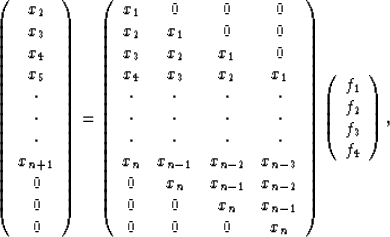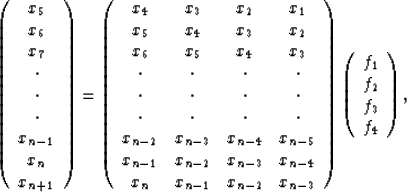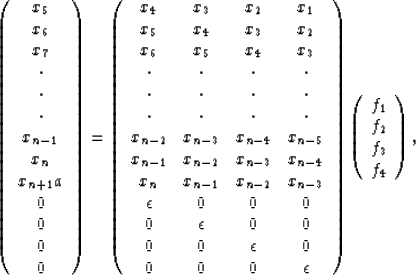Though less of a problem than the long time-length filter,
the tendency for the lateral prediction coefficients to be concentrated near
the output trace position with Gulunay's f-x prediction
causes more noise to be passed.
The source of this problem can be seen in the
system describing the f-x prediction filtering, ![]() , or
, or
 |
(6) |
The increased weighting of the nearest trace can be remedied by setting up the problem differently. Removing the top and bottom rows of Equation (6) produces
 |
(7) |
Expanding Equation (7) to add a damping condition to equally weight the filter coefficients gives
 |
(8) |
Although these modifications should improve the noise attenuation properties
of the complex prediction filter,
the biasing
effect on the noise attenuation
is very small compared to the improvement from using the shorter time-length
filter of a typical t-x prediction.
A feature of Gulunay's method is, that for noiseless data, prediction
is unneeded and concentrating the strongest
predictions coefficients near the output
has no effect on the results.
As the strength of the noise increases,
the distribution of the amplitudes of the filter coefficients becomes
more even, since adding noise to the input provides the same effect as adding
a factor to the diagonal of ![]() .
.
It might be thought that this noise-dependent coefficient weighting gives f-x prediction an advantage over t-x prediction. However, if an irregularity such as a fault exists in the input data, both t-x and f-x predictions will generate identical filters in the noiseless case, since the difference between the input and the predicted data will be smallest for a filter with strong filter coefficients adjacent to the output trace and producing the least smearing of the irregularity. For perfectly regular data with noise added, the f-x prediction filter coefficient distribution will approach that of the t-x prediction filter as the strength of the noise is increased. Thus f-x prediction always has an effectiveness that is less than or equal to the t-x predictions effectiveness.